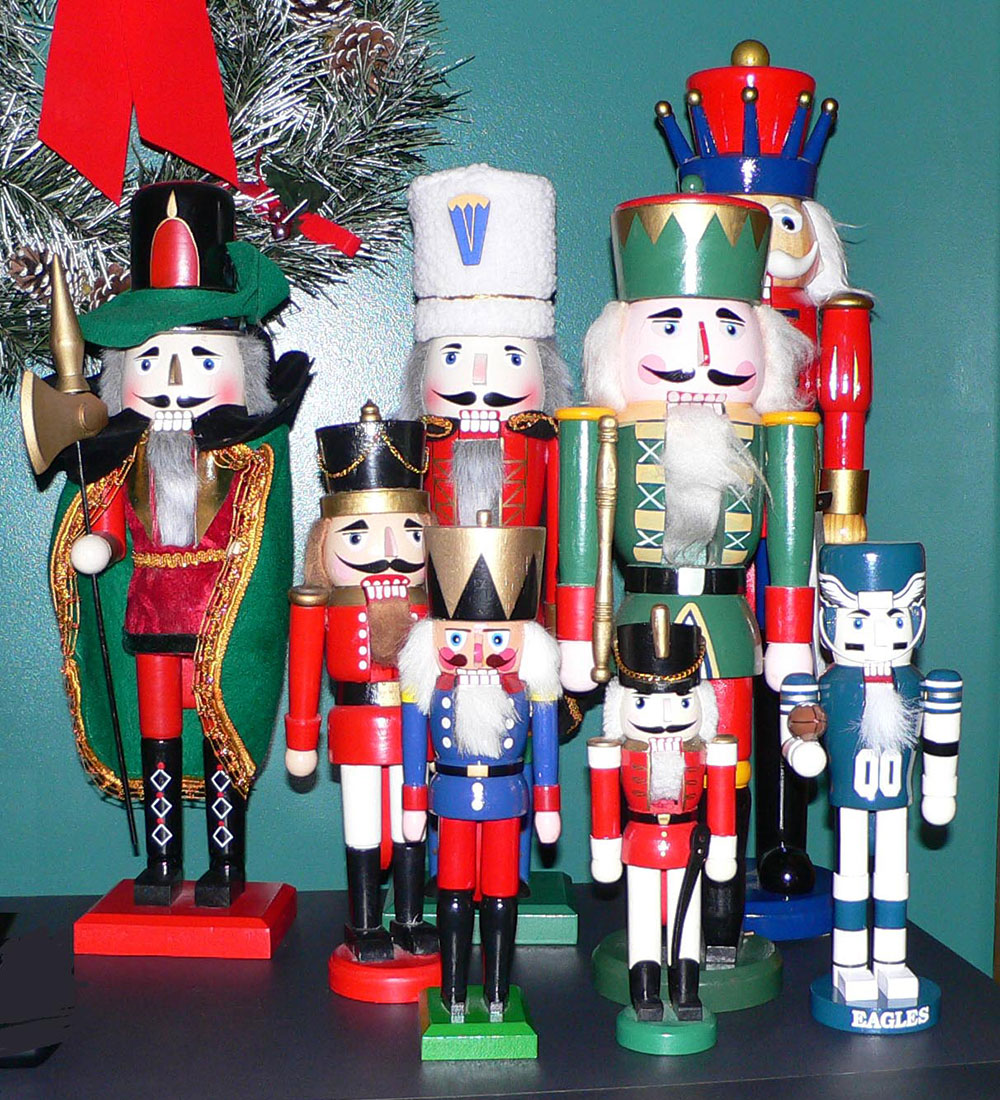Though it may seem somewhat peculiar at first glance—if not downright counterintuitive—the association of outdoor toy soldiers with Christmas is now well established in western cultures. Proof of that fact can be found in the sudden appearance of giant toy soldier decorations on front lawns and in shopping malls nationwide when the Christmas season rolls around.
The Nußknacker Connection
More precisely, most of these figures must be understood to be giant toy nutcracker soldiers. As we have discussed in previous blogs (e.g., “The Surprising Origin of Giant Nutcracker Christmas Decorations”), this relatively recent Christmas tradition of decorating homes and business establishments with these colorful martial figures reflects the ongoing popularity of the heroic nutcracker soldier depicted in the Tchaikovsky ballet, The Nutcracker.
In the United States, this tradition became even more firmly established after World War II by returning American GIs, bringing with them toy nutcracker soldiers from Germany as souvenirs. Many of these nutcracker soldiers (or Nußknacker) trace their origins to a form of German folk art from the Ore Mountains (Erzgebirge) region of Germany, whose people had gained fame for their woodcarving skills.

The Gospel Connection
Yet even older—much older—than Tchaikovsky’s ballet, there just so happens that elements of the theme of soldiery appear in the life of Christ numerous times and are ingrained into Christian imagery. When one examines this history, the incongruous popularity of martial figures elbowing their way into Christmas traditions is much less surprising. Even the seemingly peaceful “silent night, holy night” aspect of the Nativity is turned on its head when one considers that, according to the Gospel of Matthew, the Holy Family were refugees fleeing Herod the Great’s Roman soldiers, who were hunting them down. By contrast, today’s Christmas soldier decorations symbolize safety and protection for the season.
Perhaps the most notable soldiers from the Gospels are those who wrapped Christ in a purple robe, crowned him with a crown of thorns, and then led him along the stations of the cross. Their conduct is described as showing a great deal of gratuitous cruelty. Nevertheless, Christ famously absolves them for their brutality, exclaiming, “Father, forgive them; for they know not what they do.” This final demonstration of the Christian virtue of forgiveness is inherent within the original Nativity recounting—which is, after all, about redemption.
Furthering this theme of redemption, the Gospels mention a Roman soldier who pierced the crucified Jesus’ side with a lance. Outside the Biblical text, Christian tradition has it that this particular soldier (who came to be known as Longinus, but remained unnamed in the Gospels) regretted his actions, later became a follower of Christ’s teachings, and eventually came to be venerated as a saint in the Roman Catholic Church.

The martial theme seems ever-present throughout the New Testament. In Apostle Paul’s First Epistle to Timothy, Christians are called to be “soldiers of Christ.” Such a calling may seem almost incongruous when uttered in conjunction with Christ’s epithet, “Prince of Peace.” It is perhaps this contrast of bellicosity and pacifism—the same found in Christ’s famous dictum, “I did not come to bring peace, but a sword”—that makes the metaphorical significance of “soldiers in Christ” so poignant and meaningful.
It is an intriguing thought to ponder, since the outdoor toy soldiers that have become so ubiquitous amid all our other worldly, festive holiday decor possess a religious significance that is actually grounded in the historical context of Christmas, and one that is often left unexamined and widely forgotten. For a theologian, student of history, or any lover of Christmas, this metamorphosis of the particulars of the Gospel tales into the showy outdoor Nutcracker figures we know today is yet another fascinating facet of the surprising story of these symbols of Christmas spirit.



